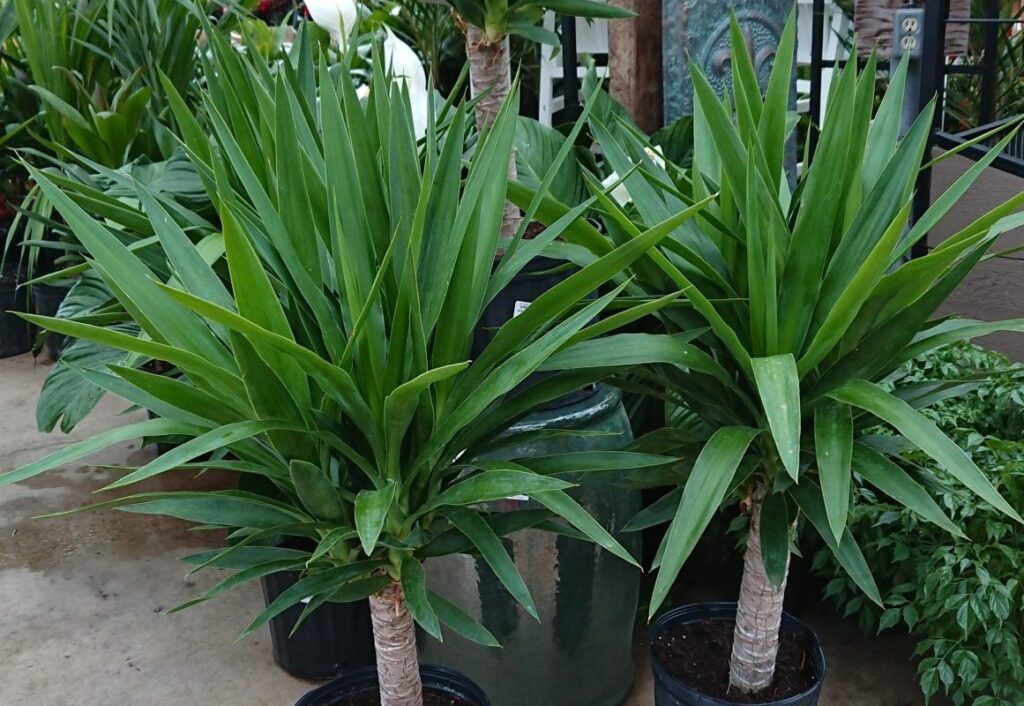
Source getgoldoon.com
Welcome to our guide on indoor yucca plant care! Yucca plants are not only aesthetically pleasing but also have numerous health benefits, making them a popular choice for indoor gardens. Whether you are a seasoned plant lover or a beginner, this article will provide you with all the essential tips and tricks to ensure your indoor yucca plants thrive and enhance your living space. Read on to discover everything you need to know about the care and maintenance of these beautiful plants.
In the following sections, we will delve into various aspects of indoor yucca plant care, including light requirements, watering techniques, soil composition, pest control, and more. By understanding and implementing the proper care techniques, you can create an ideal environment for your yucca plants, allowing them to flourish and bring joy to your home for years to come.
1. Light Requirements for Indoor Yucca Plants
Ensuring Optimal Sunlight Exposure
Indoor yucca plants thrive in bright, indirect sunlight. Placing your yucca plant near a south-facing window or providing it with artificial lighting that mimics natural sunlight is crucial. However, be cautious of placing the plant under direct sunlight for extended periods, as it can lead to sunburn and damage the leaves.
Adapting to Low-Light Conditions
If your living space lacks natural light, you can still enjoy the beauty of yucca plants. Opt for yucca varieties that are suitable for low-light conditions, such as Yucca elephantipes. Additionally, you can supplement the plant’s lighting needs with fluorescent grow lights placed 6 to 12 inches above the foliage.
2. Watering Techniques for Healthy Yucca Plants
Understanding the Watering Frequency
Proper watering is essential for the health of your indoor yucca plants. Yuccas prefer a drier environment, so it’s crucial not to overwater them. Allow the soil to dry out between waterings, typically every 7 to 10 days. Avoid waterlogging, as it can lead to root rot and other water-related issues.
Mastering the Art of Watering
When watering your yucca plant, ensure you thoroughly moisten the soil, allowing the excess water to drain freely from the pot’s bottom. Using well-draining soil and a pot with drainage holes helps prevent water accumulation. Remember to adjust your watering schedule in winter when the plant’s growth slows down.
3. Soil Composition for Thriving Yucca Plants
Choosing the Right Soil Type
Yucca plants thrive in well-draining soil that replicates their natural habitat. A mix of potting soil, perlite, and sand creates an ideal growing medium. This combination ensures proper drainage while retaining adequate moisture for the plant’s roots.
Fertilizing for Optimal Growth
Yucca plants benefit from regular fertilization during their active growth period, typically spring and summer. Opt for a balanced, water-soluble fertilizer with recommended dilution rates. However, avoid overfertilization, as it can harm the plant. In winter, reduce or stop fertilization, allowing the plant to rest.
Table: Yucca Plant Care Essentials
| Aspect | Care Technique |
|---|---|
| Light | Bright, indirect sunlight; artificial lighting for low-light conditions |
| Watering | Allow soil to dry between waterings; avoid overwatering |
| Soil | Well-draining mix of potting soil, perlite, and sand |
| Fertilization | Balanced, water-soluble fertilizer during active growth; reduce in winter |
FAQs About Indoor Yucca Plant Care
Q: How often should I repot my indoor yucca plant?
A: Repotting is usually necessary every 2 to 3 years or when the plant becomes root-bound.
Q: Can I propagate yucca plants from cuttings?
A: Yes, yucca plants can be propagated from stem cuttings. Ensure the cutting has several inches of stem, let it dry, and then plant it in well-draining soil.
Q: Why are the leaves of my yucca turning yellow?
A: Yellowing leaves can indicate overwatering, insufficient light, or pest infestation. Evaluate your care routine to identify the cause and take necessary corrective measures.
Q: How do I control pests on my indoor yucca plant?
A: Common pests such as spider mites and mealybugs can infest yucca plants. Regularly inspect your plant and use organic insecticidal soap or neem oil to combat these pests.
Q: Are yucca plants safe for pets?
A: Yucca plants contain saponins, which can cause discomfort if ingested by pets. It’s best to keep yucca plants out of reach of curious animals.
Conclusion
Congratulations! You are now equipped with the knowledge and techniques to provide optimal care for your indoor yucca plants. Remember to create a suitable environment with proper lighting, watering, and soil composition. Regular monitoring, occasional fertilization, and pest control will ensure your yucca plants thrive and become stunning focal points in your home. Enjoy the beauty and benefits of these wonderful plants!